Three artists inspired by citizen science in Tromsø.
- Delphin Ruché

- Aug 11
- 6 min read
Updated: Aug 13
Jacqueline Kärcher, Florentine Schäfermeier and Martha Steinmetz formed a collaborative trio, exploring Rissa Citizen Science’s work through their artistic lens. Having now collected all the material they need, they are ready to set their creative minds in motion. In the meantime, the three artists kindly share a glimpse of their story with us.
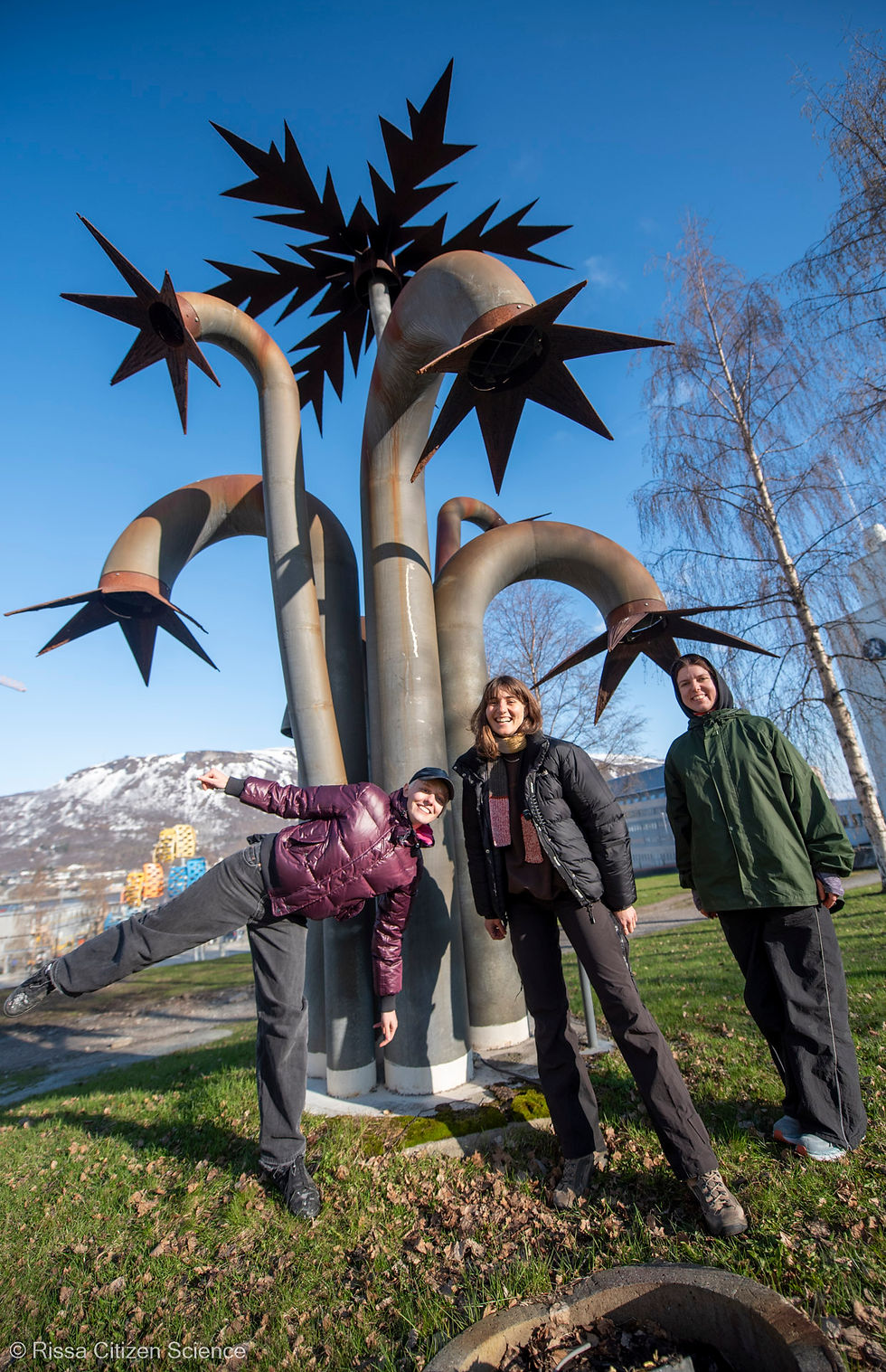
Florentine, Martha and Jacqueline near the kittiwake hotels in Tromsø.
1- Jacqueline, Florentine, Martha, can you introduce yourself?
Hey! We met here in Tromsø and came together to collaborate on a documentary project focused on kelp forest restoration.
Jacqueline I focus on expanding the accessibility of democratic engagement in daily life and questions the development of my generation’s relationships towards educational, cultural, economic and scientific institutions. Observative documentation methods and dialogues of and with my immediate surroundings lead my research which combines diverse narrated perspectives. Through performative translations, visuals, and sounds, I encourage individuals in contemporary society to connect, engage, and exchange views and opinions, fostering a confident awareness of their own position and participation in shaping their future.
Florentine My work explores the intricate relationship between the human and the more-than-human world, which I examine through thoughtful photographic research and film. By blending serious visual documentation with playful reinterpretation, I create work that is both thought provoking and approachable. With my unique approach, I position myself as a documenting narrator, offering “serious fun” outcomes that challenge perceptions.
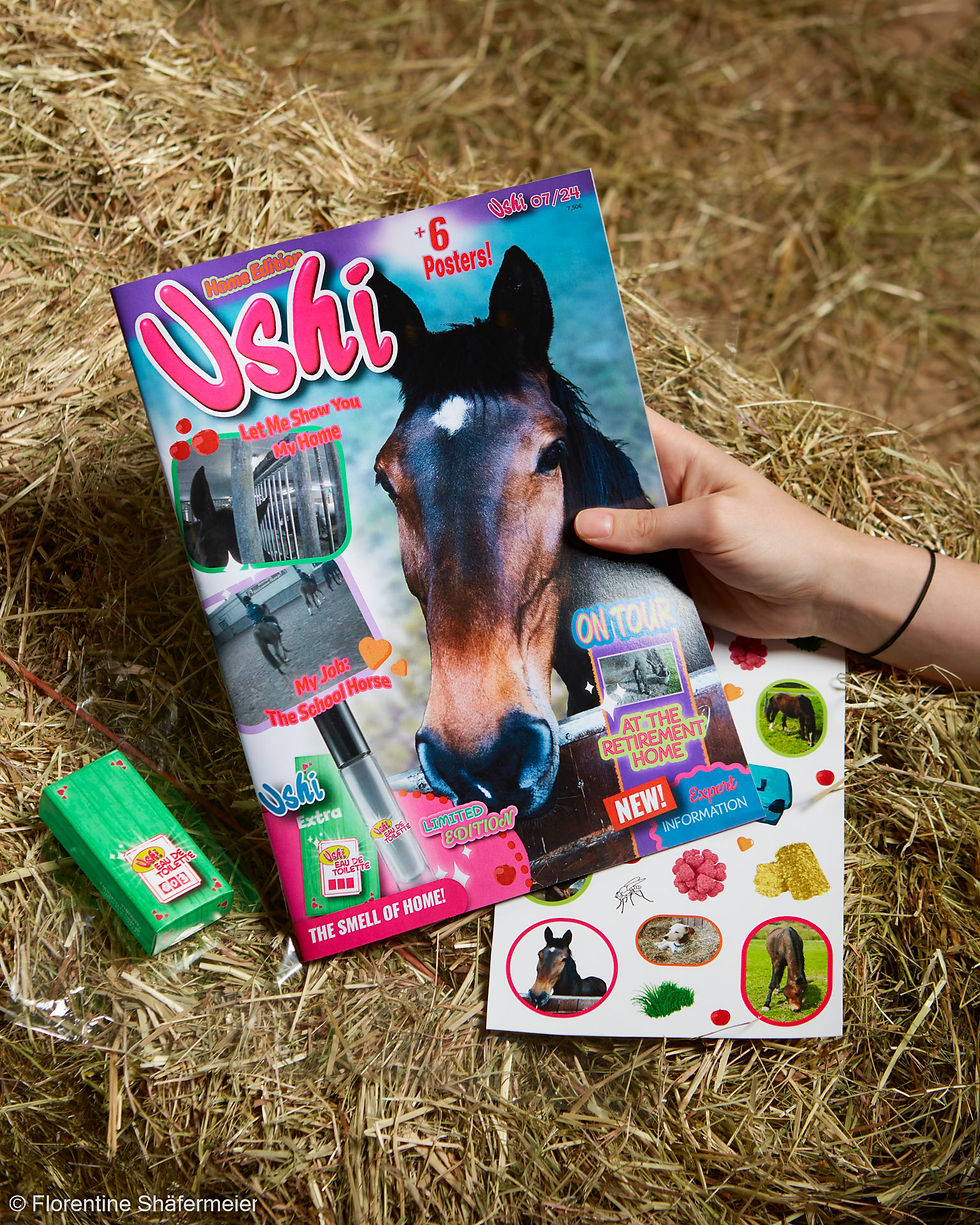
A horse magazine for young horse girls in which the protagonist is a school horse showing its life from its own perspective. The magazine comes with a Parfume which smells like the horse’s farm.
Martha My artistic practice centres on attentive observation and the recording of fleeting moments, slowly forming an archive of sounds. Through my work, I aim to create auditory spaces that foreground the beauty but fragility of the living world, inviting quiet reflection and renewed learning.
Listen to this extract from a 2h sound performance Martha once improvised, live (drum by Marius Machill).
As a team, each of us can focus on different media, methods of observing and researching, allowing us to create a rich, multilayered foundation. For this specific project, Jacqueline works with still analog photography, Florentine handles filming and Martha specializes in sound recording and design – forming a strong base for an experimental, multimedia approach to documentary storytelling.
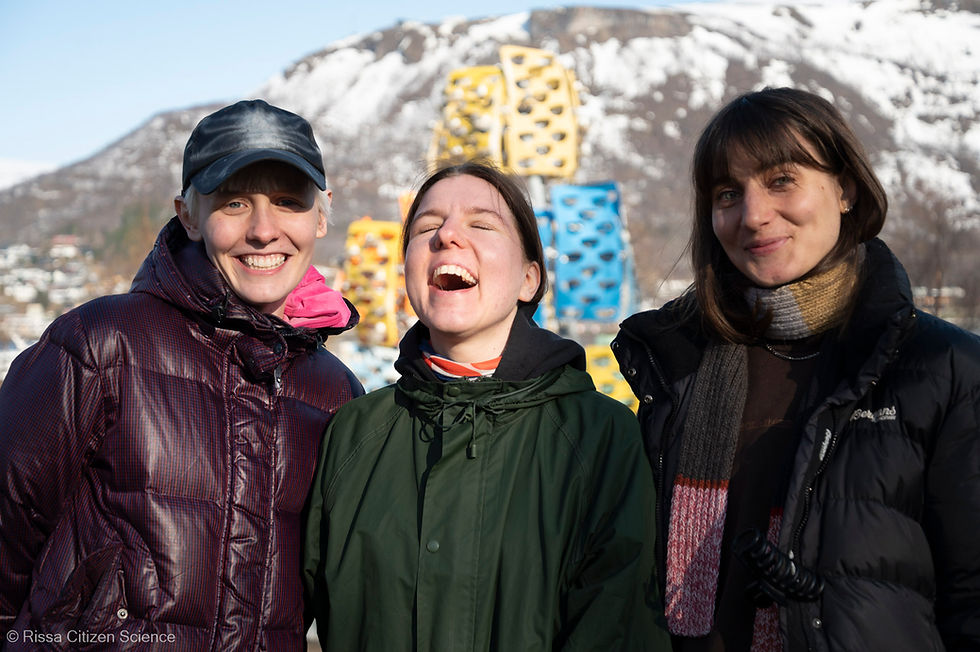
The Creative Pack in Tromsø in May 2025.
You are teaming up on an art project that is linked to Rissa Citizen Science. Can you tell us about it?
“Understory” is a collaborative visual research project that explores how analog photography, digital film and sound can document and amplify local environmental action. Based in Tromsø and its surrounding coastline, the project focuses on kelp forest restoration as a case study with Rissa Citizen Science in climate action and restoration of biodiversity. Using analog processes and experimental media, we translate these ecological efforts into immersive, emotionally resonant experiences that foster dialogue on human and more-than-human relationships.

"Kelpers", Mai 2025 by Jacqueline Kärcher (analog photography).
As artists, what inspired you in Rissa Citizen Science's projects?
Jacqueline:
I think the most memorable aspect of Rissa toward my artistic practice is the accessibility of participation of everyone with any kind of educational background.
Through the offer of low-barrier participations in Rissa's events for people of diverse backgrounds, I found a new relevance for my artistic practice. I want it to function as a vessel to motivate people who want to engage with nature and its conservation, but don’t really know how.
Offering space and time to participants in their workshops, Rissa Citizen Science makes it easy to engage hands-on and with directly visible impact in a diverse range of projects which empowers the feeling of hope strongly.
I hope that my artistic perspectives give access to those abstract experiences and feelings of empathy and personal responsibility to drive change.

Sea urchins in a net, by Jacqueline Kärcher (analog photography).
Florentine:
It was always difficult for me to find ways of engaging in a world of crisis through my work as a documentary narrator. It always feels as if it is not enough. Joining Rissa Citizen Science and getting to know their work helped me to realize that it is more about staying engaged and keep aiming for a deeper understanding of the more-than-human world, because that is basically the only thing you can do. What inspires me is the accessibility Rissa's events offer to “the normal citizen” - it gives people the opportunity to keep doing and form a deeper knowledge and understanding.
My role as a documenting narrator started to make sense again, because all the different projects fostering coexistence are such a strong example on how we (humans and more-than-humans) are able to shape each other’s lives positively. Not only for me, but also for people who touch on Rissa's work through our film. I believe my role is to share this growing empathy with those who are losing hope in the possibility of better coexistence.
Martha: What fascinates me most is the vibrant life within the environments where Rissa operates and inspires change. Its subtle rhythms - initially hidden, then uncovered through focused action - reveal a world in urgent need of transformation.

Martha was one of the Kittiwalkers during her stay in Tromsø in 2025.
You have been participating in several events organized by Rissa Citizen Science. What are the projects you found most inspiring as artists?
Jacqueline:
Within Rissa’s events, I found it very valuable to exchange experiences, knowledge, and energy to broaden my own perspective and simultaneously help my immediate surrounding nature recover. Especially Rissa’s engagement with the locally focused kelp forest restoration project made my individual actions feel more relevant and impactful than I had previously thought. It literally allowed me to dive into a new world of natural creatures and get closer to parts of our planet I had never been immersed in before.
Becoming active empowered my sense of ability to effect positive change and gave me hope to spread the idea that individuals can indeed make a difference in such globally overwhelming challenges as the loss of biodiversity and climate change.
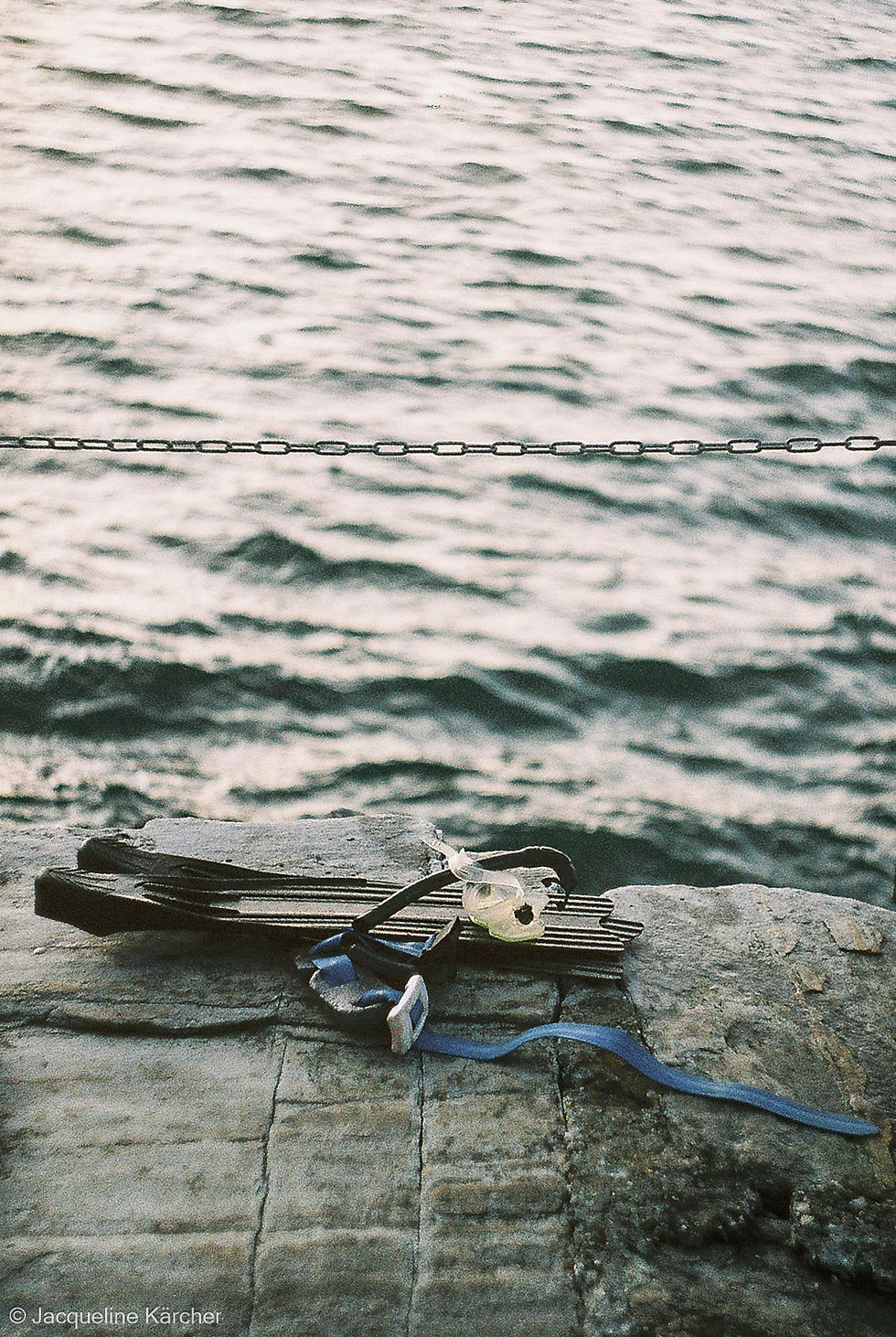
After the dive, by Jacqueline Kärcher (analog photography).
Florentine:
Whatever you choose to spend your time on shapes your way of being, thinking and acting. It sounds very simple, but I think that simple thing is something that working with Rissa Citizen Science made me very aware of. Joining the events showed me that engaging with your environment and fostering a better way of coexisting with the more-than-human can be fun, it can become a hobby. A hobby in which you not only learn, but also create new friendships (human and more-than-human alike). It is a way of engagement that shapes your way of thinking towards a more open and careful view of the beings around you.
Caring becomes part of your life. The feeling of being helpless in times of climate crisis slowly fades by being active with Rissa’s events.
I think a good example of this was the campfire restoration event I joined once. Joining it while methods of restoration are still being developed, showed me the interacted and careful design choices that go into every single step of restoration. As a designer I found this process very interesting, because it showed me how intertwined design, art and science is.
Martha:
For me, it’s not about a single project but the feeling that arises whenever I engage with Rissa's initiatives. This feeling comes from the ability to contribute to any variety conservation effort. Through careful observation and collective involvement, I realize how vital every small action is and how significant its impact can be. I’ve learned that caring begins with participation and through participation, both empathy and knowledge grow.

Kelper along Sørsjetéen, by Jacqueline Kärcher (analog photography).
When and where will we be able to see and listen to your artwork?
We are planning to submit our work to various film festivals and will be screening it at Verdensteatret in Tromsø.
Next summer, we will hold an exhibition at the Tromsø Observatory, where you can fully experience all of our different documentations at the actual kelp forest restoration site of Sørjetéen.
We will share a link to these events in autumn 2025. Stay tune!
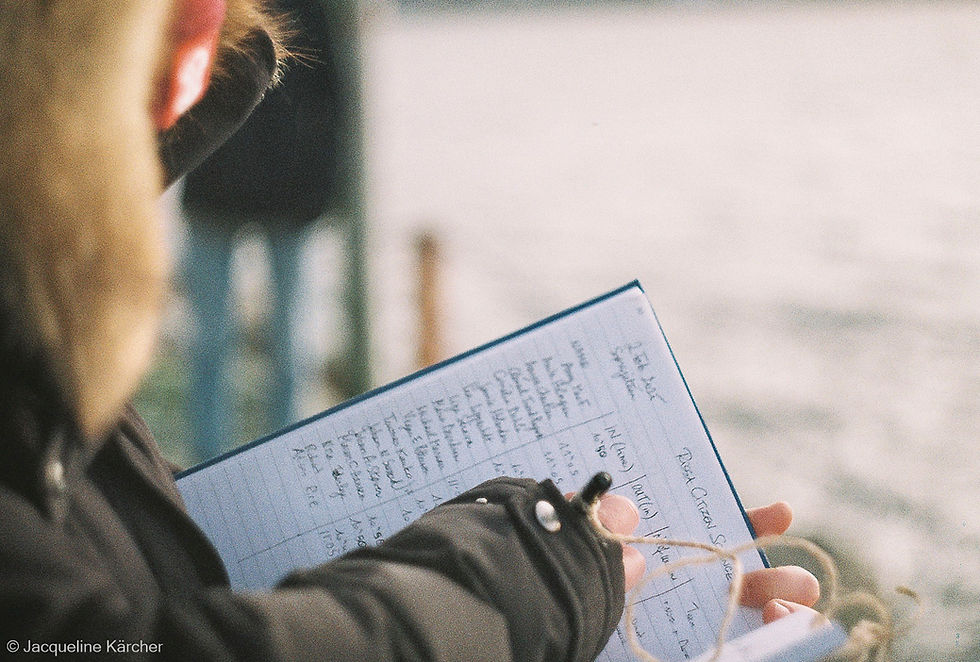
Kelper taking fieldnotes, by Jacqueline Kärcher (analog photography).
Jacqueline Kärcher and Florentine Schäfermeier studied together at the Design Academy in Eindhoven, while Martha Steinmetz completed a Bachelor’s in Psychology before studying Fine Arts at Bauhaus University Weimar.




Comments